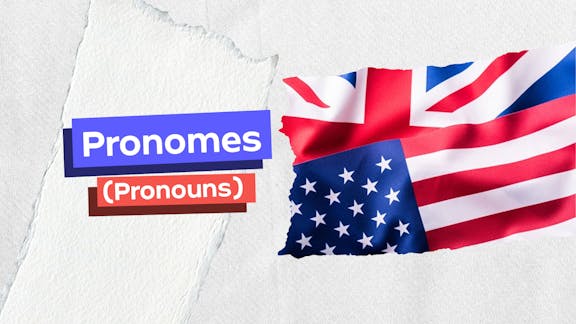Statistics related to deforestation in tropical
forests show that in 2020 it
T E X T
Britain, Norway and the United States join
forces with businesses to protect
tropical forests.
Britain, Norway and the United States
said Thursday they would join forces with some
of the world’s biggest companies in an effort to
rally more than $1 billion for countries that can
show they are lowering emissions by protecting
tropical forests. The goal is to make intact
forests more economically valuable than they
would be if the land were cleared for timber and
agriculture.
The initiative comes as the world loses
acre after acre of forests to feed global demand
for soy, palm oil, timber and cattle. Those
forests, from Brazil to Indonesia, are essential
to limiting the linked crises of climate change
and a global biodiversity collapse. They are also
home to Indigenous and other forest
communities. Amazon, Nestlé, Unilever,
GlaxoSmithKline and Salesforce are among the
companies promising money for the new
initiative, known as the LEAF Coalition.
Last year, despite the global downturn
triggered by the pandemic, tropical
deforestation was up 12 percent from 2019,
collectively wiping out an area about the size of
Switzerland. That destruction released about
twice as much carbon dioxide into the
atmosphere as cars in the United States emit
annually.
“The LEAF Coalition is a
groundbreaking example of the scale and type
of collaboration that is needed to fight the
climate crisis and achieve net-zero emissions
globally by 2050,” John Kerry, President Biden’s
senior climate envoy, said in a statement.
“Bringing together government and privatesector resources is a necessary step in
supporting the large-scale efforts that must be
mobilized to halt deforestation and begin to
restore tropical and subtropical forests.”
An existing global effort called REDD+
has struggled to attract sufficient investment
and gotten mired in bureaucratic slowdowns.
This initiative builds on it, bringing private
capital to the table at the country or state level.
Until now, companies have invested in forests
more informally, sometimes supporting
questionable projects that prompted accusations
of corruption and “greenwashing,” when a
company or brand portrays itself as an
environmental steward but its true actions don’t
support the claim.
The new initiative will use satellite
imagery to verify results across wide areas to
guard against those problems. Monitoring entire
jurisdictions would, in theory, prevent
governments from saving forestland in one
place only to let it be cut down elsewhere.
Under the plan, countries, states or
provinces with tropical forests would commit to
reducing deforestation and degradation. Each
year or two, they would submit their results,
calculating the number of tons of carbon dioxide
reduced by their efforts. An independent
monitor would verify their claims using satellite
images and other measures. Companies and
governments would contribute to a pool of
money that would pay the national or regional
government at least $10 per ton of reduced
carbon dioxide.
Companies will not be allowed to
participate unless they have a scientifically
sound plan to reach net zero emissions,
according to Nigel Purvis, the chief executive of
Climate Advisers, a group affiliated with the
initiative. “Their number one obligation to the
world from a climate standpoint is to reduce
their own emissions across their supply chains,
across their products, everything,” Mr. Purvis
said. He also emphasized that the coalition’s
plans would respect the rights of Indigenous and
forest communities.
From: www.nytimes.com/April 22, 2021
T E X T
Britain, Norway and the United States join forces with businesses to protect tropical forests.
Britain, Norway and the United States said Thursday they would join forces with some of the world’s biggest companies in an effort to rally more than $1 billion for countries that can show they are lowering emissions by protecting tropical forests. The goal is to make intact forests more economically valuable than they would be if the land were cleared for timber and agriculture.
The initiative comes as the world loses acre after acre of forests to feed global demand for soy, palm oil, timber and cattle. Those forests, from Brazil to Indonesia, are essential to limiting the linked crises of climate change and a global biodiversity collapse. They are also home to Indigenous and other forest communities. Amazon, Nestlé, Unilever, GlaxoSmithKline and Salesforce are among the companies promising money for the new initiative, known as the LEAF Coalition.
Last year, despite the global downturn triggered by the pandemic, tropical deforestation was up 12 percent from 2019, collectively wiping out an area about the size of Switzerland. That destruction released about twice as much carbon dioxide into the atmosphere as cars in the United States emit annually.
“The LEAF Coalition is a groundbreaking example of the scale and type of collaboration that is needed to fight the climate crisis and achieve net-zero emissions globally by 2050,” John Kerry, President Biden’s senior climate envoy, said in a statement. “Bringing together government and privatesector resources is a necessary step in supporting the large-scale efforts that must be mobilized to halt deforestation and begin to restore tropical and subtropical forests.”
An existing global effort called REDD+ has struggled to attract sufficient investment and gotten mired in bureaucratic slowdowns. This initiative builds on it, bringing private capital to the table at the country or state level. Until now, companies have invested in forests more informally, sometimes supporting questionable projects that prompted accusations of corruption and “greenwashing,” when a company or brand portrays itself as an environmental steward but its true actions don’t support the claim.
The new initiative will use satellite imagery to verify results across wide areas to guard against those problems. Monitoring entire jurisdictions would, in theory, prevent governments from saving forestland in one place only to let it be cut down elsewhere.
Under the plan, countries, states or provinces with tropical forests would commit to reducing deforestation and degradation. Each year or two, they would submit their results, calculating the number of tons of carbon dioxide reduced by their efforts. An independent monitor would verify their claims using satellite images and other measures. Companies and governments would contribute to a pool of money that would pay the national or regional government at least $10 per ton of reduced carbon dioxide.
Companies will not be allowed to participate unless they have a scientifically sound plan to reach net zero emissions, according to Nigel Purvis, the chief executive of Climate Advisers, a group affiliated with the initiative. “Their number one obligation to the world from a climate standpoint is to reduce their own emissions across their supply chains, across their products, everything,” Mr. Purvis said. He also emphasized that the coalition’s plans would respect the rights of Indigenous and forest communities.
From: www.nytimes.com/April 22, 2021
Gabarito comentado
Vamos analisar o enunciado:
Statistics related to deforestation in tropical forests show that in 2020 it ...
Tradução - Estatísticas relacionadas ao desmatamento em florestas tropicais mostram que em 2020 ele...
Vamos analisar o trecho que trata sobre as estatísticas relacionadas ao desmatamento em 2020, o parágrafo 3:
Last year, despite the global downturn triggered by the pandemic, tropical deforestation was up 12 percent from 2019, collectively wiping out an area about the size of Switzerland. That destruction released about twice as much carbon dioxide into the atmosphere as cars in the United States emit annually.
Tradução - No ano passado, apesar da crise global desencadeada pela pandemia, o desmatamento tropical aumentou 12% em relação a 2019, eliminando coletivamente uma área do tamanho da Suíça. Essa destruição liberou cerca de duas vezes mais dióxido de carbono na atmosfera do que os carros emitem anualmente nos Estados Unidos.
Como o texto foi escrito em 2021 (From: www.nytimes.com/April 22, 2021), o "ano passado" mencionado no texto é 2020, o ano a que se refere a questão. Pela tradução acima, você pode perceber que o desmatamento aumentou 12% em 2020 em relação a 2019.
A) Incorreto - was reduced in relation to the previous two years. = foi reduzido em relação aos dois anos anteriores.
B) Correto - increased in relation to the previous year. = aumentou em relação ao ano anterior.
C) Incorreto - declined significantly because of the pandemic. = diminuiu significativamente por causa da pandemia.
D) Incorreto - was exactly the same as 2019. = foi exatamente igual a 2019.
Gabarito do Professor: Letra B.






